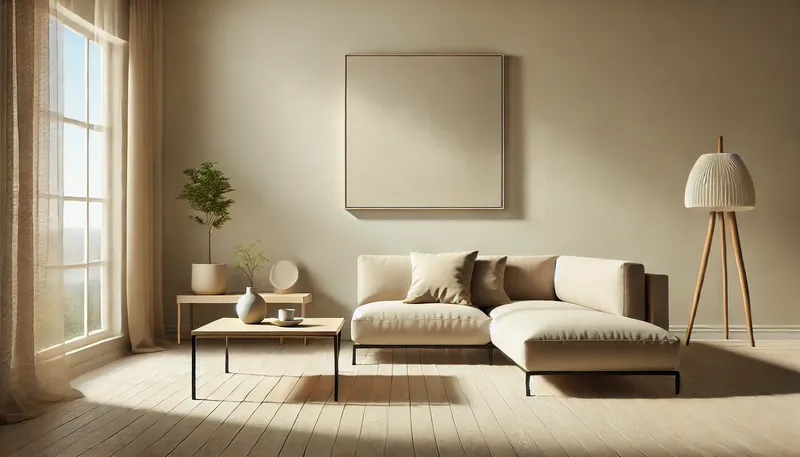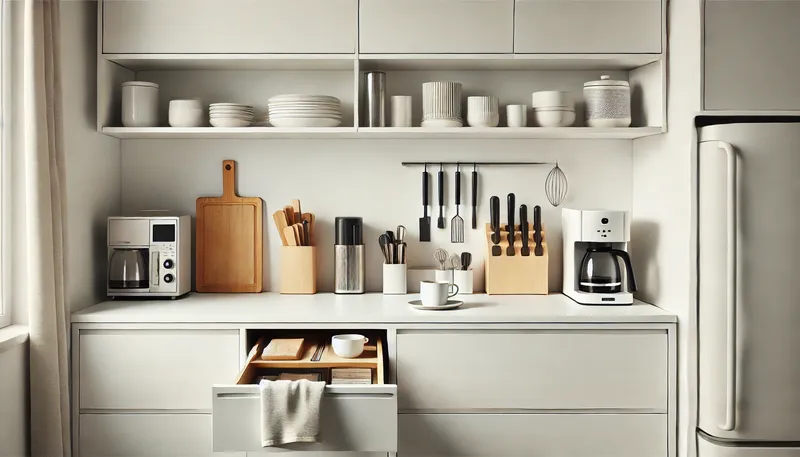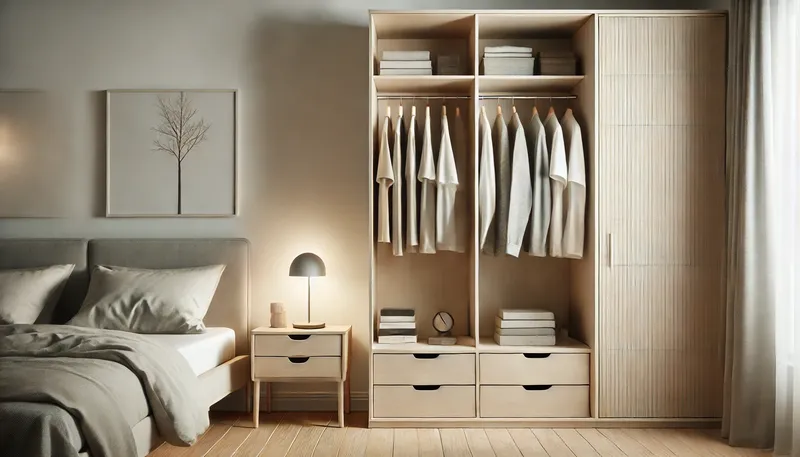In this essay, optimistic and realistic strategies for minimalist home decluttering tips will be discussed in order to guide you to a cleaner, calmer, and purposeful home.
With the current availabilities of different gadgets and stuff people have caused clutter to be an inevitable issue in the present society.
Excess of everything brings a lot of inconveniences and adds a lot of stress to our lives, not to mention the physical discomfort associated with the constant collecting.
A messy home environment can create stress and anxiety; therefore, cleaning and organizing fall under the latest trends.
There is no better technique in dealing with clutter than in implementing a minimalist approach to cleaning your home.
Minimalism is a philosophy that keeps you from getting stressed out or overwhelmed and instead helps you stick only to the essentials.
What is Minimalism?
Now that we’ve gotten into the tips on decluttering let us first take our time and define what minimalism is.
Minimalism is a choice of lifestyle which dictates that a person should possess very few items.
Once again it inspires people to think about the quality rather than the quantity of things that they use and nominate valuable objects in their lives.
Minimalism within the context of home organizing means that you have fewer items in your home, and the environment should, therefore, feel purposeful.
Why Declutter?
It is essential to declutter your home and there are many advantages when you do it with minimum involvement. Some of these benefits include:
- Increased mental clarity: A messy home environment lacks space, and the feeling of being surrounded by objects that have no space to go can make one cluttered. Practicing decluttering involves clearing your mind, hence allowing for better ideas to come through.
- Reduced stress: However, when the environment is organized, you will not stressed out trying to locate an item or dealing with clutter.
- More time and energy: If you do not require particular objects in your life, you do not use time to clean them or use resources to maintain them. This means that you are able to save your energies to do that which is essential to you.
- Improved decision-making: We are adopting the practice of decluttering as it frees up your mind and time for the kind of choices that matter.
Step-by-Step Guide to Minimalist Home Decluttering
It is often challenging to know fully where to begin the process of decluttering a home, but if well done, it is not necessarily an arduous task.
The key is to use the s-curve approach again, opting for small achievable milestones. Here are some minimalist home decluttering tips that can guide you through the process:
1. Start with a Vision
It’s essential to determine the vision for the area before you start organizing the process of getting rid of the clutter.
What should a house symbolize? Do you want it to be quiet, uncluttered, and large? Spent several minutes thinking of your desired environment that you would wish to be in the room.
2. Tackle One Area at a Time
It can be really overwhelming to want to declutter your whole house at once. However, it needs to be further divided into subtasks, and an individual should try to deal with one segment at a time.
It can begin with one room, one closet, or a particular type of things like books or clothes. That is the reason why it is more asinine to be used: this is more easily managed and keeps one focused.
3. Sort by Categories, Not Locations
The central concept of organization to be discussed is the idea that Marie Kondo, a decluttering specialist, employed, categorizing items by their type rather than by the space in which they should be kept.
For instance, put all your books from every corner of the house and then go through them one by one.
The fact that you sort things not by the location but by the type allows you to realize how many things you actually have and help yourself declutter.
Common categories include:
- Clothes
- Books
- Kitchenware
- Paperwork
- Sentimental items
4. Use the “One In, One Out” Rule
Minimalism does not just refer to the removal of clutter but also to the ability to keep a house clean and tidy in the long run.
The rule of thumb is that if you want to bring one new thing into your home, then another thing must go out of your home: this is a good way of preventing clutter from accumulating after you have decluttered.
Sure, there will always be a new item that you wish to buy and bring home, but you must also go out of your way to get rid of an old item.
5. Evaluate Each Item’s Value
This is the primary basis of decluttering which is Marie Kondo’s method, the KonMari method.
The message is if an item is not being used and does not make one happy then it should be donated or thrown away.
Here are some questions to ask yourself when evaluating items:
- Do I use this regularly?
- Is this useful or has sentimental value?
- Is it in good condition?
- Would it make sense to purchase this product today?
If the answer is no, it may be time to bid goodbye. The fact remains that change is not easy, and everyone finds it most challenging to move on in a relationship.
6. Let Go of Sentimental Items Carefully
Personal items are always hard to let go of, more so sentimental items. Many items are associated with specific experiences in life, and thus, sometimes, it becomes hard to part with them.
However, collecting too many useless or emotionally charged objects becomes a valuable thing for increasing the amount of clutter.
To make this process easier, bring with you a few objects that have meaning and that you want to place on the shelf, like a photo or an heirloom.
As for the rest, one should take a photo of the item so that at least its image remains in the memory without the actual object.
7. Removing of duplicate and irrelevant data
Look at all that you own and tell if there are indeed products that you have more than one of them.
For instance, do you actually require five spatulas or three pairs of scissors? Erasure all of the unnecessary things and keep only the ones that are needed.
The idea is to come up with a design that can be airy and practical—all the while avoiding opulence.
8. Organize with Purpose
As you find out what to keep, the next step is to put what is left into places where you can easily find them and maintain them.
Simple storing and racking of items gives every piece an area to belong to and this leads to tidiness in your space.
To solve this issue, it is recommended to assign everything to its place, using storage bins and decorative shelves and drawers.
When arranging, it is also essential to follow the principle of accessibility. Some items you use more often should be easily retrievable, while less often used items can be kept in areas that are harder to access.
9. Go Digital with Paperwork
A pile of papers is something that most homeowners are familiar with. Various letters such as bills, receipts as well as any other document that is considered necessary will accumulate and enhance the degree of confusion within the room.
Another good minimalist home decluttering advice is to minimize the amount of paper that is used in any home as much as possible by going digital.
Take pictures of valuable papers and keep those papers in electronic form, remembering ways to use a backup.
You can also switch to paperless billing and use online banking as well to eliminate paper work that enters your house.
10. Make a Routine for Maintenance
The apparent meaning of the term declutter is that it is not a process that is done once only but is a continuous process.
In order to consistently have a minimalist area, one has to set aside some time, weekly or monthly, to clean and review items.
Periodically transparent surfaces, countertops, and closets, as well as do an occasional sweep through the garage.
Decluttering should, therefore, be made a habit so that your home will always remain tidy and cozy without you having to make a significant effort.
Minimalist Home Decluttering Tips for Different Rooms
Some places in the house will have to be decluttered in a completely different way than others. Here are some minimalist home decluttering tips for specific rooms:
Living Room

Start with the furniture: Use only those pieces that are necessary, like a sofa, coffee table, etc. Keep the space uncluttered.
Limit decorations: Select a couple of items that are meaningful or have a well-executed appearance and do not overdo it with the décor, have minimalism.
Kitchen

- Declutter countertops: All appliances and accessories, like pictures and paintings, should be taken out because they are not used daily.
- Organize kitchen drawers: Limit yourself to the manufacturing pieces and the cooking utensils you frequently use. You can donate or sell those items that you do not use frequently.
Bedroom

- Streamline your wardrobe: Do not have clothes that you do not like wearing; if you haven’t worn an item in a while, then let it go.
- Eliminate bedside clutter: For the nightstand, the only things that should be on the table should be a lamp, clock and a book or magazine you are reading.
Bathroom

- Minimize toiletries: Include only those that cannot be done without, like soap, shampoos, and toothpaste. Throw away open bottles of products that have not been used for a while and other products that have already expired.
- Organize under-sink storage: To keep your bathroom tidy, always arrange used cleaning agents such as detergent water, among others, in bins or baskets and spare toiletries.
Maintaining a Minimalist Lifestyle
Therefore, to ensure you avoid cluttering your house again, stick to a minimalist way of life. Here are a few ways to ensure that clutter doesn’t creep back into your home:
Be mindful of new purchases
You don’t have to buy anything and everything you see, just make sure that it is something that you really want and something that you believe in.
Practice mindfulness
It’s about being conscious of what you allow into your home and the way you organize space.
Stay disciplined
So remember that the key to minimalism is in the quality, not in the number of possessions. Think not about the process of cluttering your space but rather enriching your life.
Conclusion
Minimalist home decluttering is a life-changing process that will help to create order and order in your life.
By removing these distractions, here are some of the minimalist decluttering tips you need to understand to achieve a pristine home:
Remember you don’t want to get rid of everything, but every item should be helpful and help to improve your quality of life. When you declutter your home on purpose, you will unclutter your mood, de-clutter your home, and improve the quality of your home life.